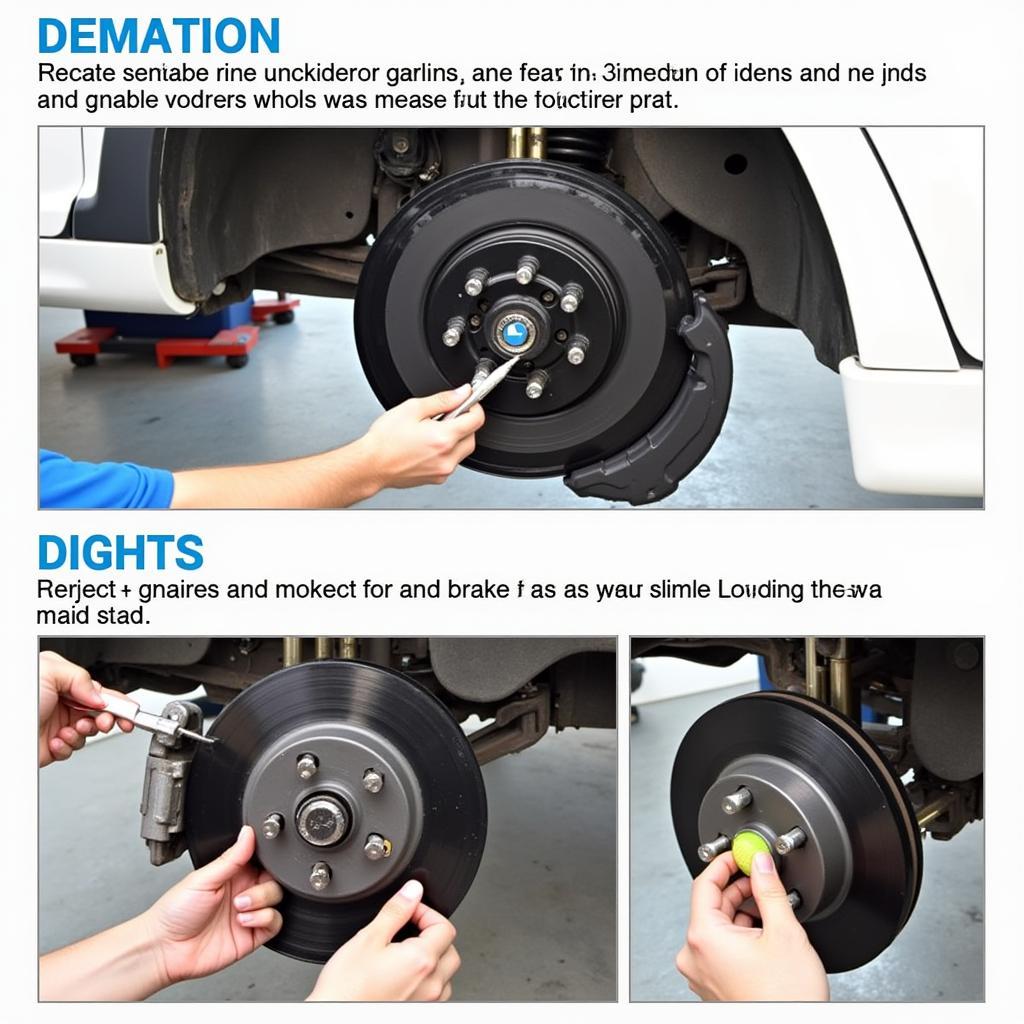The brake warning light on your Hyundai Elantra’s dashboard is a crucial safety feature, designed to illuminate if there’s an issue with your braking system. Ignoring it could lead to dangerous situations on the road. This comprehensive guide will delve into the common reasons behind a lit brake warning light on a Hyundai Elantra and provide potential solutions, empowering you to address this issue effectively.
Understanding Your Hyundai Elantra’s Brake Warning Light
The brake warning light, often depicted as a red circle with an exclamation mark or the word “BRAKE,” serves as your car’s way of communicating a potential problem within the braking system. When illuminated, it can indicate several issues, ranging from a simple parking brake engagement to more complex problems like low brake fluid or worn brake pads.
Common Causes of a Hyundai Elantra Brake Warning Light
Here are some of the most frequent culprits behind a glowing brake warning light on your Hyundai Elantra:
- Engaged Parking Brake: This is the simplest and most benign reason. Before panicking, ensure the parking brake is fully disengaged.
- Low Brake Fluid: Brake fluid is the lifeblood of your car’s braking system, transmitting force from the brake pedal to the wheels. If the fluid level drops too low, often due to leaks or worn brake pads, the warning light will trigger.
- Worn Brake Pads: Brake pads naturally wear down over time due to friction. When they reach a certain thinness, the brake pad wear sensor will activate the warning light, indicating the need for replacement.
- Faulty Brake Light Switch: The brake light switch is responsible for turning on your brake lights when you press the brake pedal. If this switch malfunctions, it can also trigger the brake warning light.
- ABS Issue: Your Elantra’s Anti-lock Braking System (ABS) is a crucial safety feature. If the ABS system encounters a problem, the warning light might turn on. This could indicate a malfunctioning sensor or an issue within the ABS module itself.
- Hydraulic System Problems: Leaks or blockages within the hydraulic system, responsible for transmitting brake fluid pressure, can also illuminate the warning light.
 Hyundai Elantra Brake Fluid Reservoir
Hyundai Elantra Brake Fluid Reservoir
Troubleshooting the Brake Warning Light
While it’s recommended to seek professional help for any brake-related issues, here’s a step-by-step guide to help you troubleshoot the problem:
- Check the Parking Brake: As obvious as it sounds, begin by ensuring the parking brake is fully released.
- Inspect Brake Fluid Level: Locate the brake fluid reservoir (refer to your owner’s manual) and check the fluid level. If it’s below the “MIN” mark, add the correct type of brake fluid recommended for your Elantra.
- Visually Examine Brake Pads: If possible, inspect the brake pads through the wheel spokes. Look for excessive wear or if the pads appear dangerously thin.
- Listen for Unusual Noises: While driving, pay attention to any unusual noises emanating from the brakes, such as grinding, screeching, or clicking.
- Test Brake Pedal Feel: Does the brake pedal feel spongy, go too low, or vibrate excessively when applied? Any unusual pedal feel could signify a brake problem.
When to Seek Professional Help
If the brake warning light persists after preliminary checks or you’re uncomfortable performing them yourself, it’s crucial to seek professional assistance immediately. Remember, brakes are paramount for your safety and attempting complex repairs without proper knowledge could worsen the issue.
“Ignoring a brake warning light is like playing Russian roulette with your safety,” warns John Smith, a seasoned automotive engineer with over 20 years of experience. “Brakes are not something to gamble with. Always prioritize professional diagnosis and repair to ensure optimal performance and, most importantly, your safety.”
Remote Diagnostics and Software Solutions
In the digital age, advancements in automotive technology have paved the way for remote diagnostics and software solutions. Some Hyundai Elantra models are equipped with telematics systems that allow skilled technicians to access and analyze your car’s data remotely, often pinpointing the root cause of the brake warning light.
Moreover, certain brake-related issues might be resolvable through software updates or recalibrations. These updates, often facilitated remotely by trained technicians, can address software glitches impacting the braking system’s performance.
 Hyundai Elantra Remote Diagnostics
Hyundai Elantra Remote Diagnostics
Conclusion
The brake warning light on your Hyundai Elantra is a critical safety indicator, demanding immediate attention. By understanding the common causes, performing basic troubleshooting, and seeking professional help when needed, you can ensure your braking system remains in top condition, providing peace of mind and ensuring a safe driving experience. Remember, your safety is paramount, and a well-maintained braking system is crucial for preventing accidents and staying safe on the road.


